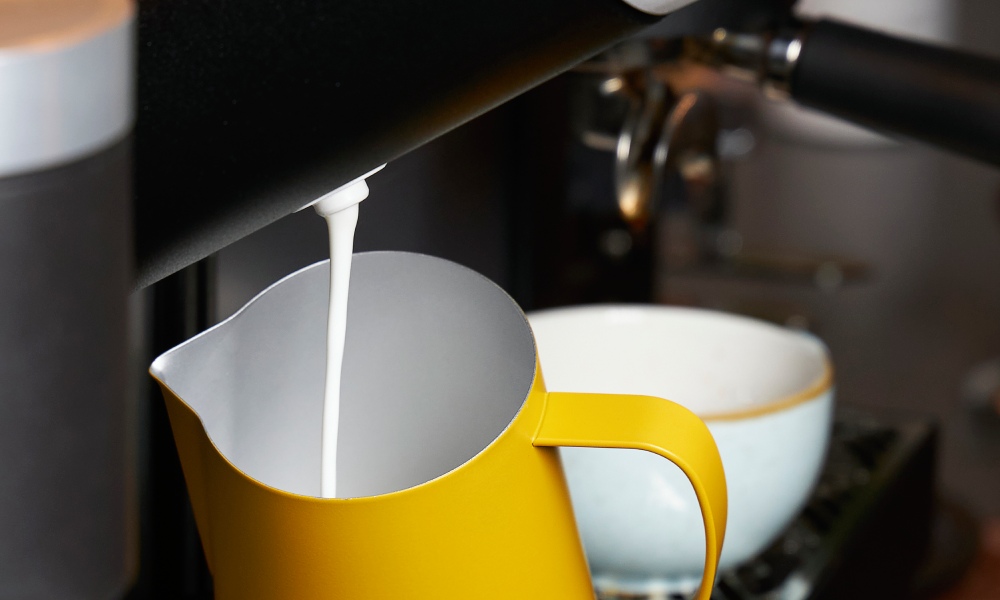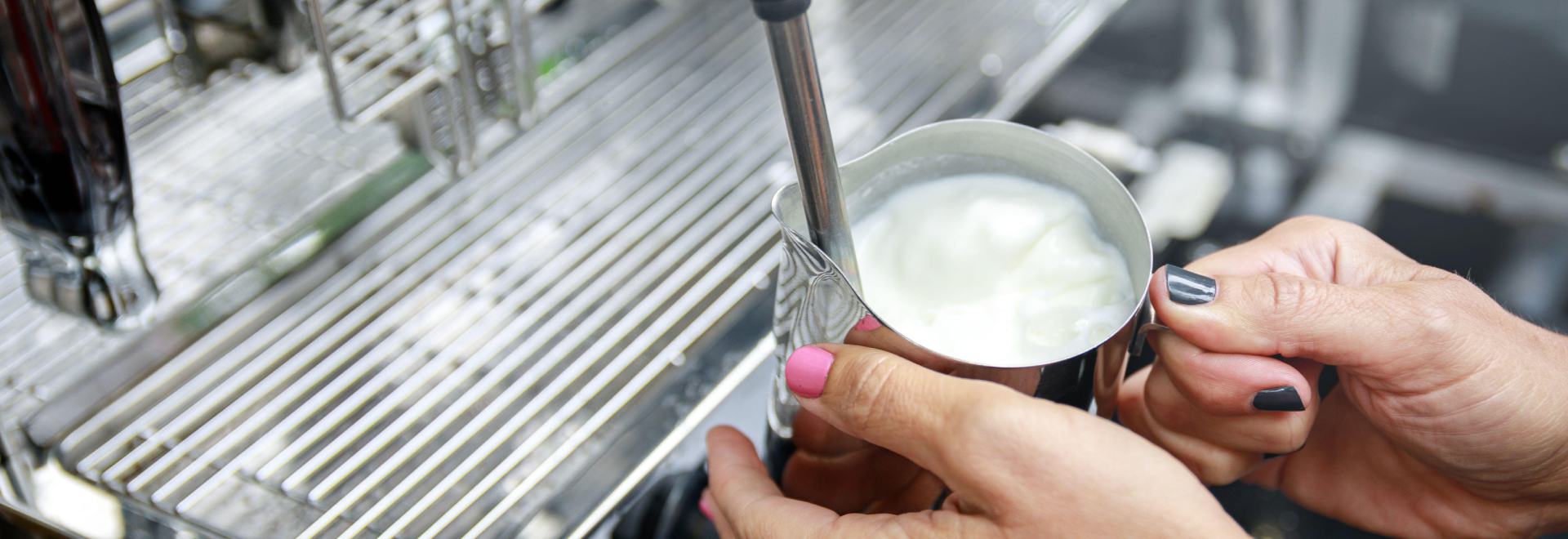Does steam injection affect the nutritional value of milk?
Ashe Samuels sits down with Yulia Klimanova to discuss how steam injection may affect the nutritional value of milk.
Dairy milk is often positioned as a positive, nutritional start to the day. Indeed, milk does contain an abundance of nutrients. A single cup of whole dairy milk contains over eight grams of protein, as well as calcium, phosphorus, vitamin B2, and vitamin B12 – all of which unequivocally contribute to a healthy body.
However, the composition of these compounds can change depending on their temperature. A common conversation in specialty coffee is the effect of temperature on foam stability; yet, this is intrinsically linked to milk’s nutritional value.
Milk proteins play a central role in creating microbubbles during the foaming process. Before heat is introduced to milk, the proteins are in “clusters”. As the temperature increases, these clusters unravel into a different structure. This process is known as denaturation – a chemical change where the structure of the milk’s whey proteins alters permanently.
This is what allows milk to “stretch”. As this happens, the proteins begin to form around the air being injected into the liquid.
“It’s the process of unfolding the structure, especially whey proteins or globular proteins that are inside the milk composition initially,” says Yulia Klimanova, PhD of Life Sciences and co-author of Effects of different steam injection conditions on cappuccino’s nutritional profile. “The degree of the denaturation strongly depends on the temperature of heating.”
“The higher the temperature, the higher the degree of denaturation. It leads to irreversible changes within the protein structure – in this case, the foam will be less stable than at lower temperatures.”
Given that denaturation causes permanent chemical changes to the proteins, could steam injection be bad for the nutritional value of milk?
Temperature is key
Specialty coffee has long since claimed 60-65°C as the optimal temperature for steaming milk. Indeed, Yulia believes this continues to be a reliable ballpark.
“It’s better not to overheat to 70°C or higher, but 65°C, according to my research, is quite okay.” She says. “At 60°C, we can taste the sweetness of milk better than at lower or higher temperatures.”
Yulia notes that higher temperatures can increase the amount of water that separates from the foam, a process she refers to as “liquid drainage”.
“Overheating milk to a temperature of more than 70°C is not desirable because it leads to excess and faster liquid drainage,” she says.
Yulia also found that higher temperatures are not conducive to milk foam stability: “We found that temperatures from 50°C to 60°C seem to be optimal in terms of static parameters for microfoam stability and milk organoleptic properties.”
Furthermore, she notes that the initial treatment of milk has a significant impact on foam stability and the nutrients found in the product used by the end-consumer, concluding that pasteurisation has the best outcomes.
“What’s most important is the initial thermal treatment of milk – pasteurisation or UHT or sterilised – but sterilised is almost never used for coffee making,” Yulia says. “Pasteurisation’s nutritional components are still there – the proteins are almost in their initial structure.”
As such, milk’s nutritional value may have already been significantly altered before steam is introduced to it. Nevertheless, for baristas, maintaining the optimal temperature range is crucial to preserving the nutritional integrity of the milk.
“I can say that the nutritional quality of milk doesn’t seem to be affected by steam injection treatment carried out at temperatures of 60 to 65°C, according to our studies.” She says. “But at higher temperatures, we noticed a detrimental lactoperoxidase of vitamin B6 and folic acid.”

An alternative to steam injection
To address the challenges related to steam injection and potentially preserve milk’s nutritional value, steamless milk frothing solutions offer an alternative. For instance, Heylo’s induction heating system can produce cold-frothed milk, allowing it to be stretched without the risk of damage from higher temperatures.
“It depends on heating more, not on the steaming itself,” says Yulia. “Proteins will not undergo thermal changes in denaturation because that occurs in higher temperatures. All those temperature-sensitive vitamins and proteins will be stable in the cold solution in terms of agitation.”
Looking beyond hot and cold milk, Yulia believes there are just as interesting comparisons between dairy and plant milks.
“There is a huge difference in their nutritional profiles,” she says. “Vegan milks usually try to get closer to the composition of dairy milk. I can say that, typically, one serving of bovine milk contains 120 milligrams of calcium while plant-based milk alternatives that are fortified contain higher levels of calcium than bovine milk.”
A factor that is not widely recognised as contributing to the reduced nutritional value of plant-based milk is sedimentation. “Calcium-fortified soy beverages average only 31% of the label claimed when unshaken and 59% on average when shaken.”
However, the primary limitation of plant milks is how different their chemical composition is from dairy. “For example, the lactose in [dairy] milk enhances the viability of calcium and other minerals,” says Yulia. “These components act together in order to ensure better bioavailability of nutrients.”
Additionally, the different chemical composition of plant milks, such as their lower protein content, affects their response to steam injection. This means that plant milks like oat, rice, and almond are more challenging to froth compared to dairy milk.
Nevertheless, steam injection inevitably impacts the nutritional value of milk – plant or dairy. However, this is primarily associated with higher temperatures, rather than the steam itself.
Those looking for an alternative may turn to new milk-frothing technology, offering baristas more precise temperature control, helping to preserve the milk’s nutrients – all while enhancing foam stability and maintaining the creamy texture so crucial to specialty coffee.
New Ground Coffee
Want to read more articles like this? Sign up for our newsletter!







